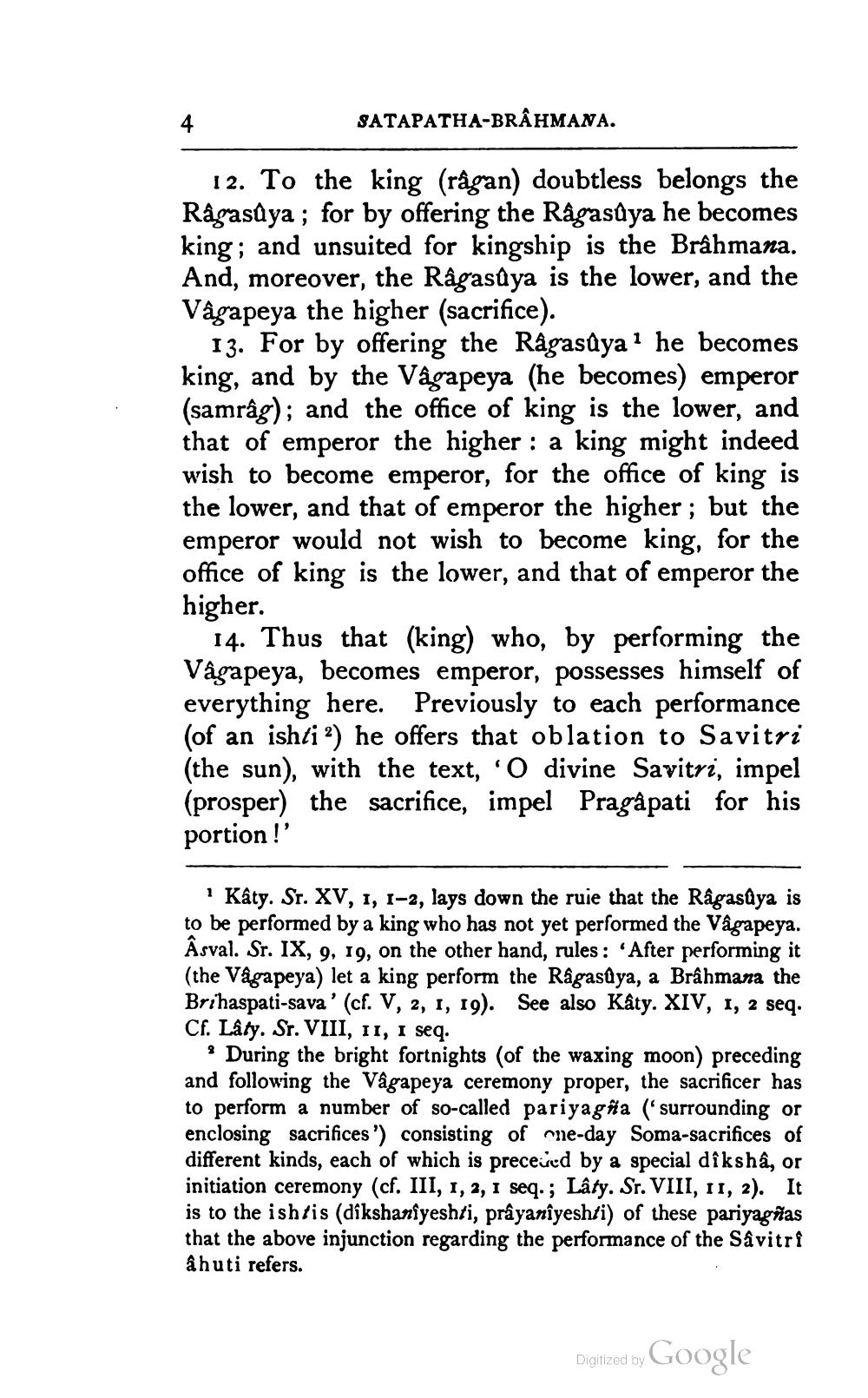________________
SATAPATHA-BRÂHMANA.
12. To the king (rågan) doubtless belongs the Ragasûya ; for by offering the Râgasůya he becomes king; and unsuited for kingship is the Brâhmana. And, moreover, the Râgastya is the lower, and the Vâgapeya the higher (sacrifice).
13. For by offering the Râgasûya ? he becomes king, and by the Vâgapeya (he becomes) emperor (samrâg); and the office of king is the lower, and that of emperor the higher : a king might indeed wish to become emperor, for the office of king is the lower, and that of emperor the higher ; but the emperor would not wish to become king, for the office of king is the lower, and that of emperor the higher.
14. Thus that (king) who, by performing the Vâgapeya, becomes emperor, possesses himself of everything here. Previously to each performance (of an ishtia) he offers that oblation to Savitri (the sun), with the text, 'O divine Savitri, impel (prosper) the sacrifice, impel Pragapati for his portion !'
Kâty. Sr. XV, 1, 1-2, lays down the ruie that the Râgasůya is to be performed by a king who has not yet performed the Vågapeya. Asval. Sr. IX, 9, 19, on the other hand, rules : After performing it (the Vågapeya) let a king perform the Ragasûya, a Brâhmana the Brihaspati-sava' (cf. V, 2, 1, 19). See also Kâty. XIV, 1, 2 seq. Cf. Lâty. Sr. VIII, 11, 1 seq.
• During the bright fortnights (of the waxing moon) preceding and following the Vågapeya ceremony proper, the sacrificer has to perform a number of so-called pariyagħa (surrounding or enclosing sacrifices') consisting of nne-day Soma-sacrifices of different kinds, each of which is preceved by a special dîkshâ, or initiation ceremony (cf. III, 1, 2, 1 seq. ; Lâty. Sr. VIII, 11, 2). It is to the ishtis (dikshaniyeshti, prâyaniyeshti) of these pariyagñas that the above injunction regarding the performance of the Savitri ahuti refers.
Digitized by Google




